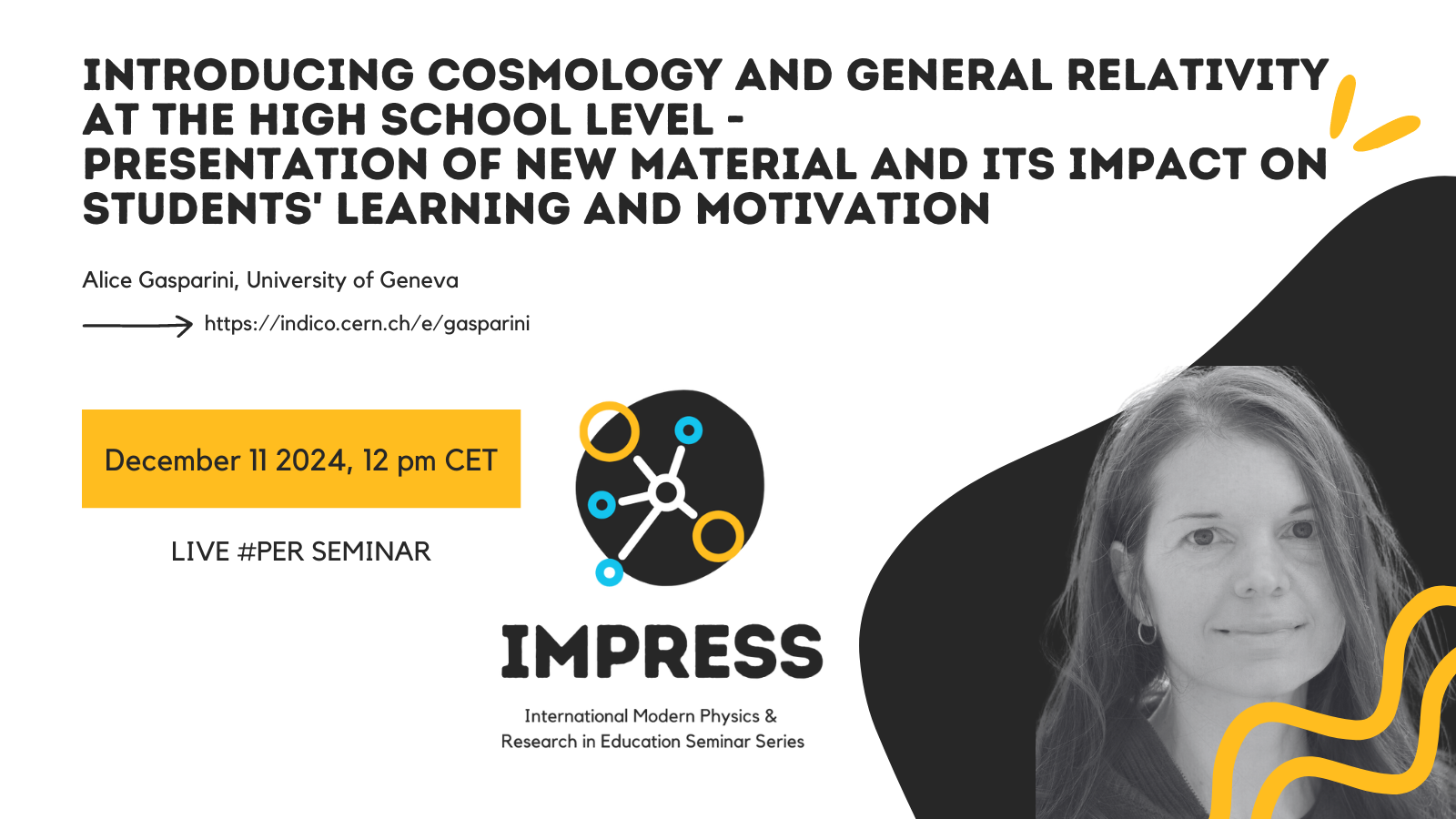Cosmology and general relativity (GR) in upper secondary school through new targeted teaching materials: a study on student learning and motivation
by
From the big bang to black holes, from elementary particles and the fundamental interactions that govern our universe to the world's largest and most complex scientific instruments, our knowledge of the world builds on modern physics. To make our current-best understanding available to all, we need to invest in educational research and bridge the gap between those who know science, those who teach science, and those who learn science.
This month, we are going to discuss a paper by Alice Gasparini, Andreas Mueller, Florian Stern and Laura Weiss:
Cosmology and GR remain largely inaccessible to high-school teaching due to the advanced prerequisites to master these topics. Integrating them into upper secondary teaching is a significant challenge that remains unresolved. This contribution reports on an implementation study of a GR and cosmology course for upper secondary school students as part of an educational project launched during the centenary of GR and tested ever since for several years. The course aimed to expand students' knowledge to include current physics topics while highlighting their foundations in areas of classical physics such as Newtonian mechanics, electromagnetism, and waves. Targeted teaching and learning materials are focused on conceptual and qualitative understanding, while systematically combined with a mathematical treatment accessible at the upper secondary level, avoiding oversimplification. A key element is an active learning approach, incorporating activities and tasks such as engaging applications related to current research, reflective exercises, thought experiments, and hands-on tasks. The main research objective was to explore whether a conceptually deep and educationally effective GR and cosmology course could be successfully implemented for non-specialist upper secondary students. A pre-post study assessed both conceptual learning and affective outcomes, including interest, curiosity, self-concept, and perceived relevance of science. Results showed encouraging gains in both learning and motivation, with large to very large effect sizes for conceptual learning of core principles. Additionally, no or small effects of predictors such as gender were observed. We conclude that the integration of GR and cosmology into upper secondary physics teaching, in the form of courses and materials that are engaging, comprehensible, and impactful, is feasible.
Paper Preprint: Gasparini, A., Mueller, A., Stern, F., & Weiss, L. (2024). Cosmology and general relativity (GR) in upper secondary school through new targeted teaching materials: a study on student learning and motivation. https://arxiv.org/abs/2412.01551

Magdalena Kersting (Department of Science Education, University of Copenhagen, Denmark) and Julia Woithe (Science Gateway Education, CERN, Switzerland)